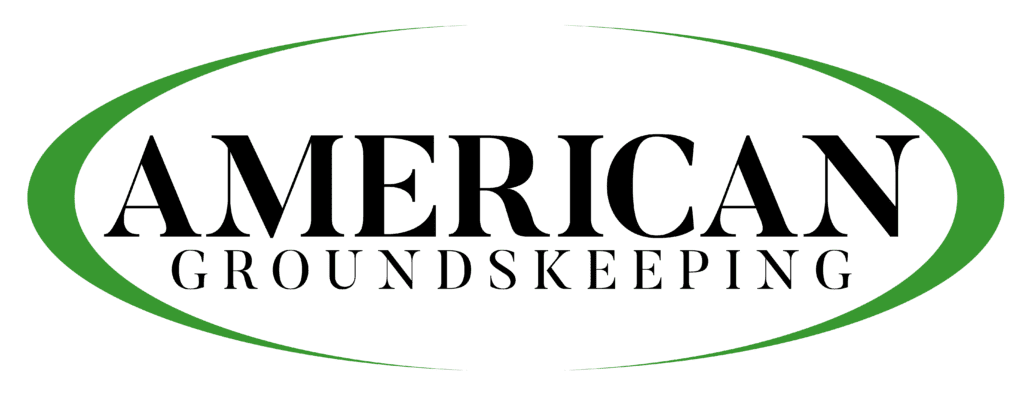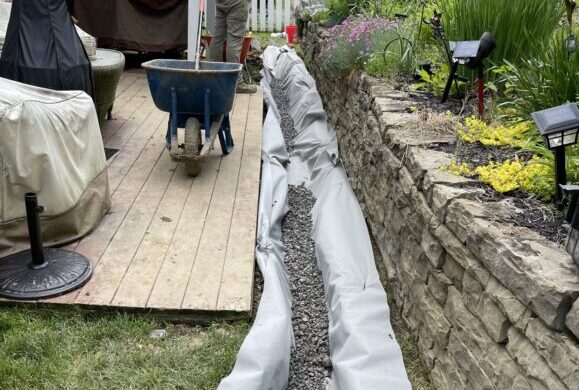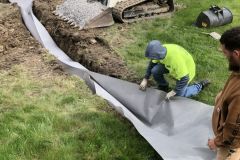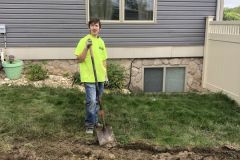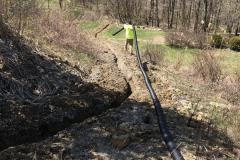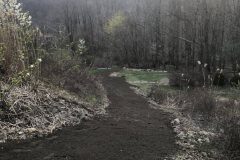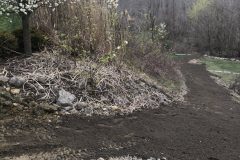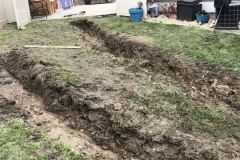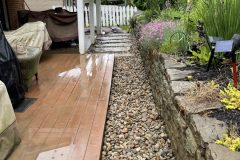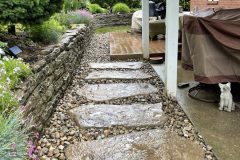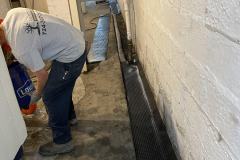French Drain Installation – Protecting Your Home from Water Damage
A French drain is a simple but effective solution for redirecting water away from your home and preventing water damage. In this guide, we will explain the basics of French drain installation and provide tips for ensuring that your installation is successful, including mentioning a trustful contractor with experience that can assist you with the process, American GroundsKeeping from Pittsburgh.



What is a French Drain?
A French drain is a trench filled with gravel or rock that is used to redirect surface water and groundwater away from a specific area. French drains can be installed around the perimeter of a house, in low-lying areas of a yard, or along the base of a retaining wall. The gravel or rock in the trench allows water to flow through while also providing a stable base for the drain pipe.
Why do you need a French Drain?
Water can cause serious damage to your home, including foundation cracking, mold growth, and basement flooding. A French drain can help to prevent these problems by redirecting water away from your home and into a safe area where it can be dispersed. Additionally, French drains can help to improve the drainage in your yard, which can prevent issues such as standing water and erosion.
How to Install a French Drain
Installing a French drain is a relatively straightforward process that can be done by homeowners with DIY skills. Here are the steps for installing a French drain:
- Determine the location for the drain. French drains should be installed in areas where
- water is pooling or where water may be flowing towards your home.
- Excavate the trench. Use a shovel to dig a trench that is at least 6 inches wide and 6
- inches deep. The trench should slope away from your home at a rate of 1 inch per foot.
- Install the drain pipe. Place a perforated drain pipe in the bottom of the trench. The drain
- pipe should be covered with at least 2 inches of gravel or rock
- Backfill the trench. Use the soil that was removed from the trench to backfill around the
- pipe. Make sure to compact the soil to prevent settling.
- Test the drain. After the trench has been backfilled, run water through the drain to make
- sure it is flowing properly.
Tips for a successful French Drain Installation in Pittsburgh
- Use a pipe with holes facing down. This will ensure that water can flow into the drain and prevent debris from blocking the pipe.
- Install a filter fabric over the pipe. This will prevent soil from entering the pipe and blocking the drainage holes.
- Make sure the trench is sloping away from your home. This will ensure that water is being directed away from your home and towards a safe area for dispersal.
- Use gravel or rock as the drainage medium. This will allow water to flow through easily and provide a stable base for the drain pipe.
Maintenance of the French Drain
French drains require very little maintenance but it’s important to periodically check the drain to make sure it’s functioning properly. Check the drain after heavy rains to make sure water is flowing through the pipe and away from your home. If you notice that the water is pooling or not flowing through the pipe, it’s likely that the drain is blocked and needs to be cleaned out.
Ensure long-term protection for your home with professional French Drain Installation
In conclusion, a French Drain is an efficient solution to water damage to a house and preventing water damage to the foundation. You may want to contact a professional to install, so it will only require minimal maintenance, and with the right installation technique and materials, it can provide long-lasting protection for your home. If you’re not comfortable installing a French drain on your own, or you’re looking for a professional finish, you may want to consider hiring a contractor like American GroundsKeeping from Pittsburgh. They are capable of handling all aspects of the French drain installation process and can help ensure that the job is done correctly. With professional installation, you can have peace of mind knowing that your home is protected from water damage by experienced professionals.
